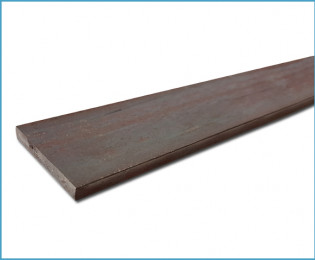
C125U - C130 / 1.1563
Selective hardening lines (or "hamons"): what are they? Selective hardening lines, or "hamons" (刃文) as the Japanese term is used, are differences in the appearance of the steel of a knife blade (or, traditionally, Katana swords in Japan) resulting from selective heat treatment.The diff...
More informationSelective hardening lines, or "hamons" (刃文) as the Japanese term is used, are differences in the appearance of the steel of a knife blade (or, traditionally, Katana swords in Japan) resulting from selective heat treatment.
The differentiation of the heat treatment according to zones defined by the craftsman reveals lines of varying brightness and contrasting steel shades.
They are arranged along the length of the blade, all along the edge.
In the tempering process, the non-insulated part of the blade will be cooled quickly, whereas the insulated part will take longer.
Beyond the undeniable aesthetic quality, the creation of real hamons, or selective hardening lines, makes it possible to obtain an extremely hard edge while keeping the rest of the blade flexible. Technically, the risks of blade breakage are thus greatly reduced.
Not all steel grades are suitable for selective hardening. Preference should be given to carbon steel grades with a simple composition and very low alloying.
Thus, the carbon steels XC100 and C130 will give excellent results, as they are highly charged with carbon. XC75, although with a lower carbon content, may also be of interest.
The hardening lines, or "hamons", are obtained by applying a more or less thick layer of refractory mortar to the blade, which will act as a thermal insulator during the hardening process.
Applied with a brush or a painter's knife, the refractory mortar is spread in a layer covering the part of the blade to be thermally insulated, so as to constitute a protective gangue.
Made from natural or synthetic clays, refractory mortar is obtained by mixing with other ingredients such as charcoal and silica.
Depending on the composition of the mortar, the thickness required for good thermal protection can be up to 3 cm (1.18in).
The Satanite proposed by Eurotechni is composed of an optimised mixture in the form of Kaolin powder (natural white refractory clay), Mullite (synthetic refractory clay used for the manufacture of fusion crucibles) and silicas (Quartz, Cristobalite). Economical and easy to use, Satanite requires a maximum thickness of only 1 mm (0.04in) for effective thermal protection.
To obtain the best possible results, it is necessary to follow a few steps to use Satanite correctly. Here are some tips from Tanguy Coillot, a knife maker from Lorraine whose work you can enjoy on his website, Facebook page and Instagram page.
Start by diluting the Satanite in water, in an airtight container, until you obtain a creamy, almost liquid consistency.
The blade on which you want to apply the Satanite must be properly degreased, and blunted with a coarse grit (60) so that it clings properly.
Apply the Satanite in a thin layer (1 mm-0.04in maximum) on the first side of your blade and let it dry. You can speed up the drying of the Satanite by using a heat gun - let it cool down well after the operation.
Repeat the process on the second side of your blade.
Don't forget to apply the Satanite to the back of the blade as well, so that the layers don't come off during heating and tempering.
Once the Satanite is dry, you can proceed with the hardening process: put your blade in the oven for the recommended holding time and then dip it in hardening oil - preferably accelerated hardening oil, such as INO 235 hardening oil. The oil should be heated to about 40°C (104℉) before immersion.
Once the blade is out of the oil, you can scrape off the Satanite and run your blade through the backstand to check the appearance of your hamons. If you are satisfied with the result, you can then go on to tempering your blade.
You can store the diluted Satanite in an airtight container for future use. If you find that it has dried out, you can add more water and mix it up so that it can be used again.
After the complete heat treatment of the blade (quenching and tempering), the final revealing of the quench lines, or hamons, is the last step before its final polishing and sharpening.
Different methods are possible.
However, we recommend the following operations to obtain good results:
- Use liquid or powdered ferro chloride to be diluted.
- Your blade will need several baths of ferro chloride to obtain an optimal result. We recommend 10 baths of ferro chloride of about 45 seconds each. The number of baths can be reduced by increasing the immersion time of the blade.
- Between each ferro chloride bath, rinse and clean the blade with steel wool 000 or 0000.
- When the successive baths are completed, neutralise the acidity of the ferro chloride on the blade with soapy water or washing-up liquid and dry.
We have now reached the end of the process of making the temper lines or hamons and all that remains is to assemble the blade of the knife and... admire a result as unique as it is spectacular.
Copyright 3801 - Reproduction in whole or in part is prohibited without the permission of EUROTECHNI S.A.S.
Opt for our secure 3D secure payment system, Paypal or bank transfer.
Secure shipping in France in 72H, packaging adapted to the products.
We are at your disposal at 04 73 51 44 77 Monday to Thursday from 8h to 12h and from 13h30 to 17h and Friday until 16h
For any order placed before 13h your parcel is sent the same day



